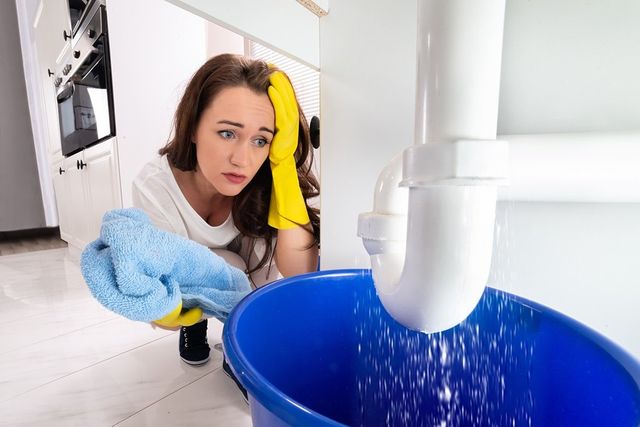Nearly everybody has their unique rationale in relation to Think Twice Before Flushing Food Down Your Toilet.

Intro
Many individuals are frequently faced with the problem of what to do with food waste, particularly when it pertains to leftovers or scraps. One typical inquiry that arises is whether it's okay to flush food down the commode. In this post, we'll delve into the reasons individuals might think about purging food, the consequences of doing so, and alternative approaches for correct disposal.
Reasons people may consider flushing food
Lack of recognition
Some people may not know the potential damage caused by flushing food down the bathroom. They might incorrectly believe that it's a harmless technique.
Comfort
Flushing food down the commode might appear like a quick and easy service to disposing of unwanted scraps, especially when there's no close-by trash can readily available.
Idleness
In some cases, individuals may just choose to flush food out of large laziness, without thinking about the effects of their activities.
Consequences of flushing food down the commode
Ecological effect
Food waste that ends up in rivers can add to pollution and damage marine ecological communities. In addition, the water made use of to purge food can strain water sources.
Pipes problems
Purging food can bring about clogged up pipelines and drains pipes, triggering expensive plumbing fixings and aggravations.
Kinds of food that need to not be flushed
Fibrous foods
Foods with coarse textures such as celery or corn husks can obtain tangled in pipelines and trigger clogs.
Starchy foods
Starchy foods like pasta and rice can soak up water and swell, resulting in blockages in pipes.
Oils and fats
Greasy foods like bacon or food preparation oils ought to never be purged down the toilet as they can strengthen and cause blockages.
Correct disposal techniques for food waste
Utilizing a waste disposal unit
For homes geared up with garbage disposals, food scraps can be ground up and purged via the pipes system. Nevertheless, not all foods are suitable for disposal in this fashion.
Recycling
Particular food packaging materials can be reused, decreasing waste and minimizing environmental influence.
Composting
Composting is a green means to dispose of food waste. Organic materials can be composted and utilized to enhance dirt for gardening.
The relevance of correct waste monitoring
Lowering ecological damage
Appropriate waste monitoring methods, such as composting and recycling, help reduce pollution and preserve natural resources for future generations.
Protecting plumbing systems
By preventing the method of flushing food down the toilet, home owners can avoid costly pipes repairs and keep the integrity of their plumbing systems.
Conclusion
To conclude, while it might be tempting to flush food down the bathroom for convenience, it is necessary to recognize the possible repercussions of this action. By embracing proper waste administration practices and dealing with food waste responsibly, individuals can contribute to healthier pipes systems and a cleaner atmosphere for all.
THINK TWICE BEFORE FLUSHING FOOD DOWN YOUR TOILET IN FALLBROOK CA
Let’s be honest, we’re really supposed to be tossing rotten or leftover food in the compost bin or trash can. But many people like to place scraps of food down the drain of, say, their kitchen sink. That’s why the garbage disposal was invented: so we can continue to place certain foods down the drain without clogging our drain in the process. Smart.
But not all of us have the luxury of having a garbage disposal installed. So, you might continue to shove food down your sink drain anyway – or worse: you might flush them down your toilet! If you’re guilty of doing the latter, you’re going to want to stop, and here’s why:
Toilet Drains Aren’t Designed to Handle Food!
There’s your answer: food just doesn’t belong in your toilet. It may seem like your toilet drain is wider than the drains of your sinks, but truth be told, that isn’t actually the case. The narrower pipes of your toilet leave your plumbing at risk for clogging if you do happen to flush your food. In addition, food doesn’t break down as quickly that toilet paper and human waste do. In turn, this leaves your toilet at risk for a nasty clog.
Although a flush of a tiny pinch of food every now and then isn’t going to completely damage your toilet, there are certain foods that should absolutely not be flushed in your toilet at all. These include starchy foods like mashed potatoes, grains, hard pieces of food that are slow to break down, and fats and oils.
The latter categories of food are particularly problematic as they may harden, expand as they absorb water, break down slowly in your system, or generally create the perfect obstruction with their gelatinous composition. These are all things you don’t want in your plumbing system!
Experiencing a Toilet Clog?
Nobody’s perfect, and we all make mistakes. Sometimes one of the mistakes people make is flushing food down their toilet and later realizing that it wasn’t the best thing to do once they see that their toilet is now clogged. Uh-oh!

Do you appreciate reading up on Flushing Food Down the Toilet?? Try leaving feedback further down. We would be delighted to know your thinking about this blog. We hope that you come back again soon. Sharing is nice. Helping others is fun. Thanks a lot for taking the time to read it.
Click Here

